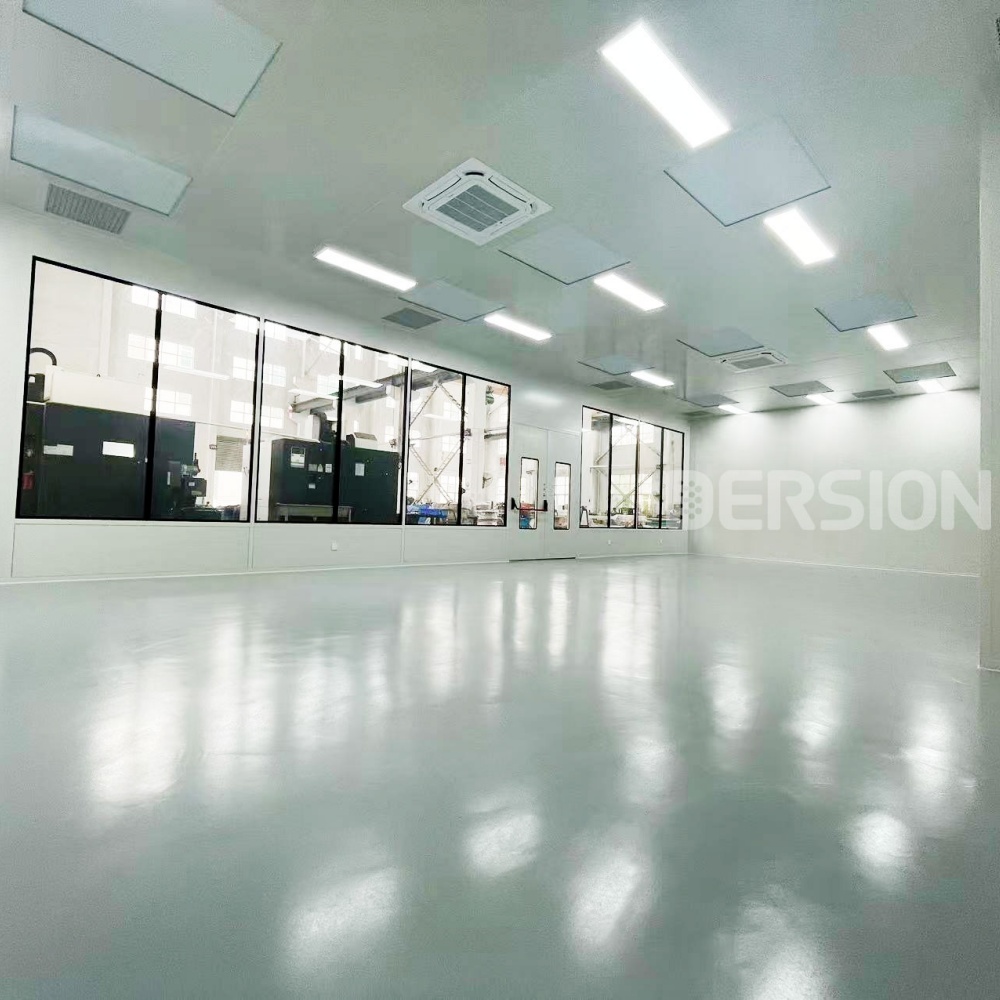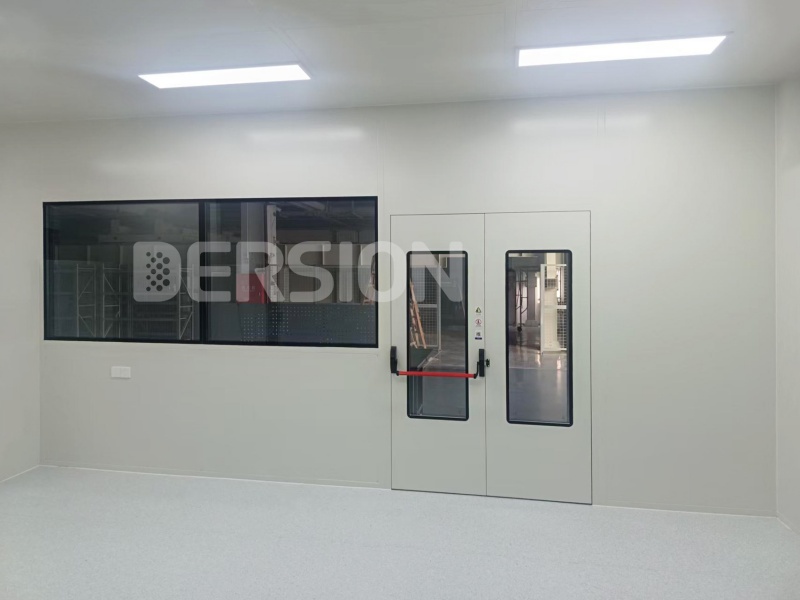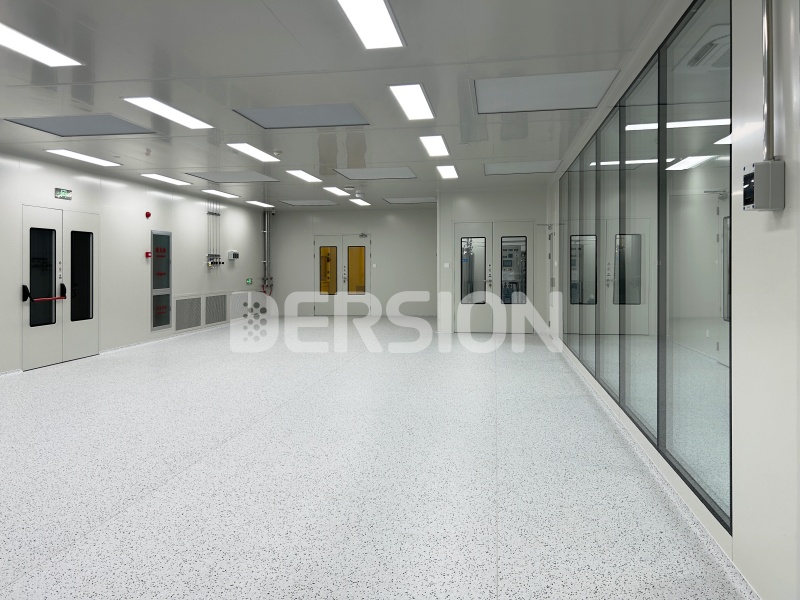In medical device manufacturing, cleanroom classification plays a vital role in ensuring product quality, sterility, and patient safety. Two of the most common cleanroom classifications used in this industry are ISO Class 7 and ISO Class 8. Understanding their key differences helps manufacturers achieve regulatory compliance while maintaining production efficiency and cost control.
Dersion, with over 20 years of cleanroom engineering experience and a 20,000 m² smart factory, provides customized ISO 7 and ISO 8 modular cleanrooms for the global medical industry.
What Is ISO 14644-1 Cleanroom Classification?
The ISO 14644-1 standard defines cleanroom classes based on the number of airborne particles per cubic meter at various particle sizes.
A smaller ISO number represents a cleaner environment.
| ISO Class | Maximum Particles (≥0.5 µm/m³) | Typical Application |
|---|---|---|
| ISO 5 | 3,520 | Implantable device assembly |
| ISO 6 | 35,200 | High-precision component assembly |
| ISO 7 | 352,000 | General device assembly and sterilization |
| ISO 8 | 3,520,000 | Packaging, washing, storage |
Learn more about the ISO 14644-1 Standard.
Key Differences Between ISO 7 and ISO 8 Cleanrooms
| Feature | ISO 7 Cleanroom | ISO 8 Cleanroom |
|---|---|---|
| Particle Limit (≥0.5 µm) | ≤ 352,000/m³ | ≤ 3,520,000/m³ |
| Air Changes per Hour (ACH) | 60–90 | 20–30 |
| Typical Pressure | +15 Pa | +10 Pa |
| Filter Type | HEPA 99.97% | HEPA 99.97% |
| Common Use | Assembly, calibration, pre-sterilization | Packaging, washing, labeling |
| Energy Consumption | Higher | Lower |
| Cost | High | Medium |
In summary:
-
ISO 7 is required for critical assembly operations, where product exposure risk is high.
-
ISO 8 is sufficient for non-critical processes, such as packaging and storage.
How to Choose Between ISO 7 and ISO 8 for Medical Devices
-
Product Risk Classification
-
Implantable and sterile devices typically require ISO 7 or cleaner.
-
Non-sterile external-use products may use ISO 8.
-
-
Process Sensitivity
-
If components are exposed during assembly or bonding, use ISO 7.
-
For packaging or labeling, ISO 8 is usually acceptable.
-
-
Regulatory Compliance
-
Both FDA and CE approvals reference ISO 14644 cleanroom standards.
-
Choosing the right class ensures smoother ISO 13485 audits.
-
-
Budget and Energy Efficiency
-
ISO 7 rooms have higher airflow and HVAC demands, increasing cost.
-
A hybrid layout (ISO 7 for assembly, ISO 8 for packaging) provides the best balance.
-
Dersion’s Modular Cleanroom Solutions for Medical Manufacturing
Dersion provides turnkey cleanroom systems designed to meet ISO 7 and ISO 8 standards, tailored for medical device manufacturers.
Dersion Cleanroom Advantages:
-
98% Reusable Modular Panels — Easy relocation and expansion.
-
German TRUMPF Equipment — High-precision structure fabrication.
-
Smart HVAC and FFU System — Real-time control of temperature, humidity, and pressure.
-
Energy Efficiency — Reduces power use by up to 30%.
-
Certified Quality — Compliant with CE, ISO, and UL standards.
Learn more at: Dersion Medical Cleanroom Solution
-光电光学行业-5.jpg)
Practical Application Example
Many medical manufacturers adopt combined ISO 7 and ISO 8 zones:
-
ISO 7 area: for assembly, sterilization, and critical inspection.
-
ISO 8 area: for packaging, labeling, and component preparation.
Dersion’s engineers design multi-zone layouts with airlocks and pressure cascades to prevent cross-contamination while optimizing operating costs.
Frequently Asked Questions
1. Can an ISO 8 cleanroom be upgraded to ISO 7 later?
Yes. With Dersion’s modular systems, upgrades can be achieved by adding FFUs and increasing airflow rates.
2. Is ISO 7 more energy-intensive than ISO 8?
Yes, due to higher air change rates. Dersion’s smart control system helps reduce power consumption by 20–30%.
3. Which setup is most cost-effective?
A hybrid configuration: ISO 7 for assembly + ISO 8 for packaging.
4. How do ISO standards relate to FDA regulations?
The FDA refers to ISO 14644 as the international standard for airborne particulate control in cleanroom manufacturing.
Conclusion
Selecting the correct cleanroom classification—ISO 7 or ISO 8—is essential for compliance, efficiency, and product quality in medical device manufacturing.
With over 20 years of expertise, a 20,000 m² smart cleanroom factory, and ISO-certified design capability, Dersion delivers modular, compliant, and energy-efficient cleanroom solutions for global medical manufacturers.
Post time: Nov-08-2025






